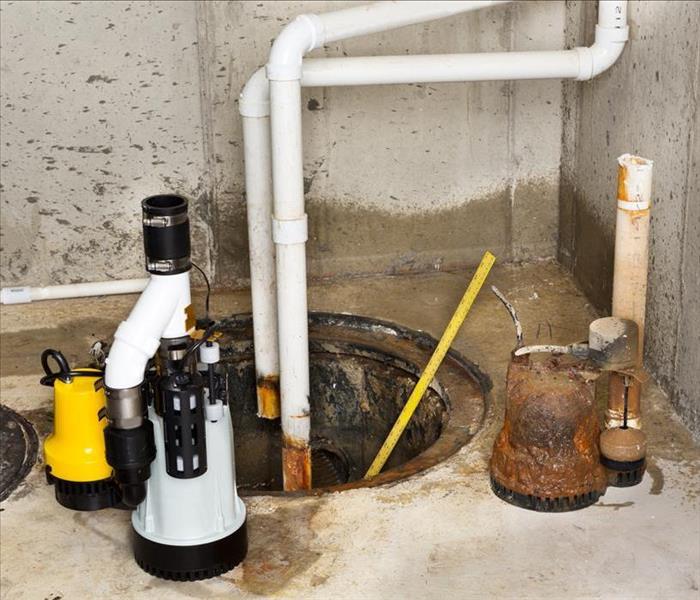How To Maintain a Sump Pump
1/27/2021 (Permalink)
Your Roanoke Rapids, NC, home's sump pump works in the background. You probably rarely even think about it. If the lower floor of your home floods, though, it'll be a different story; water damage professionals will likely be required. Some sump pumps may not work for years if there's not enough groundwater to warrant it. However, it pays to perform regular inspections and pump maintenance to ensure proper operation.
6 Steps to Maintain a Sump Pump
1. Examine the Basin
It's as essential to examine the basin, just as much as the pump. Take everything out of the pit. Then, fill it with water and check for leaks. Cracks or leaks could mean unseen water damage.
2. Check the Power
Sump pumps can commonly cause breaker trips due to the amount of power they consume. Ensure that the power cord and outlet are still in good shape.
3. Check the Drain Lines
The drain pipes need to regularly be checked to ensure they're clear. Check them by filling a bucket with hot water upstairs and pour it down the pipe. If the lines are blockage-free, it'll quickly flow into your yard or sewer. If it's draining slowly, there's probably debris in the pipe.
4. Inspect the Check Valve
Check the check valve at least once a year. It's one of the most common parts of a sump pump to fail.
5. Look for Oil Leaks
If you see oil on the pump, there's probably an issue. Try to find the source of the leak. You may need to repair or replace the pump.
6. Test the Alarm and Backup Battery
Regularly test the alarm. Ensure that it's working correctly and that you can hear it well enough in a different part of the house. The backup battery must be tested at least once a year. Disconnect the pump from its power source. Then, add some water. If the backup battery works, it should start up immediately.
Hopefully, you'll never need your sump pump. Still, having it in good working order should give you peace of mind to know your home is protected against potential floods.




 24/7 Emergency Service
24/7 Emergency Service
